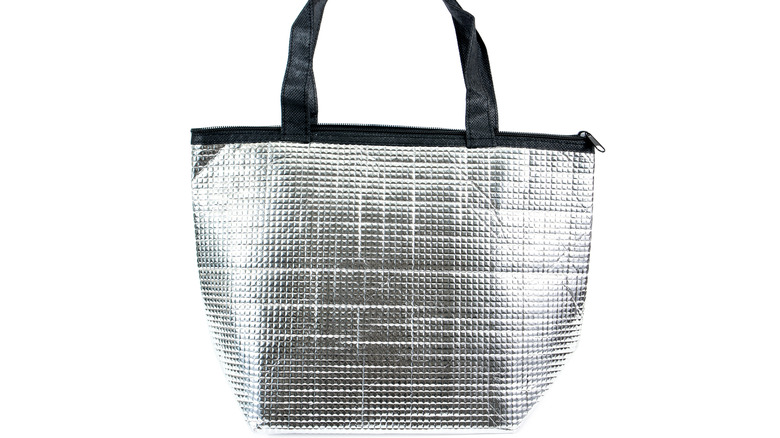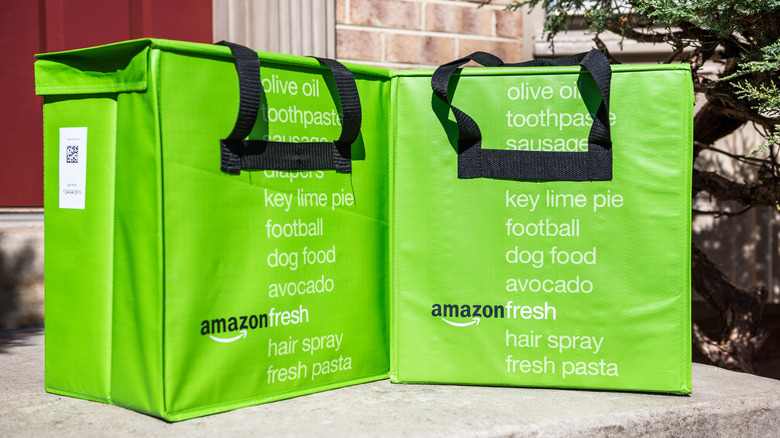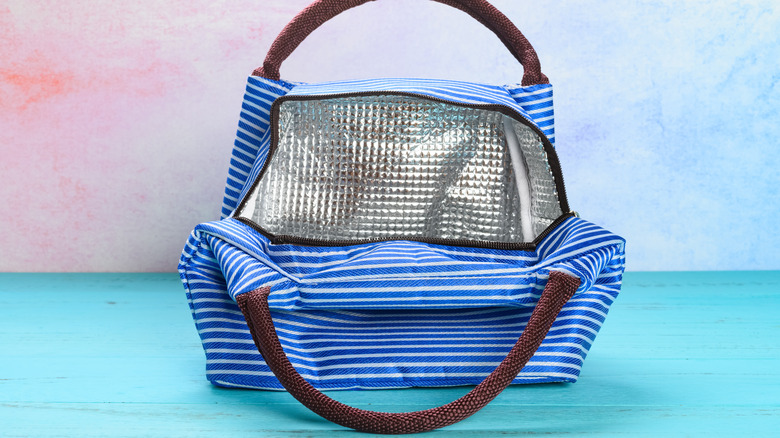How To Clean And Care For Your Insulated Grocery Bags
Insulated bags may seem like one of those frivolous purchases that are good to invest in, but perhaps not necessary. Yet these nifty little totes, which are great for keeping foods at a consistent temperature for a longer period of time, have proven to be worth it time and again — especially if you get your groceries delivered.
It's important that perishable food items always be kept at the right temperature, which is either below 40 degrees Fahrenheit or above 140 degrees Fahrenheit (when cooked). Anything in between is known as the danger zone. Even 20 minutes of exposure to this danger zone can cause the growth of foodborne bacteria such as salmonella and E. coli, according to the USDA, so if you get foods delivered and you aren't home at the time, this can present a problem unless your perishables are insulated to keep them at a safe temperature.
For an insulated bag to be effective, however, it's important to take care of it and keep it clean. While the outside is typically made of cloth, vinyl, or fabric, most have several layers of insulated materials such as foam, foil, plastic, and vinyl hiding inside which helps them do their job. These layers are often heat-reflective and waterproof, which means you can't always throw them in a washer and dryer and call it a day. Cleaning insulated grocery bags requires a more gentle approach. If not cared for properly, you could very well damage the thermal layers that make them so useful.
How to keep insulated bags clean gently but effectively
Because they typically carry foods, insulated grocery bags can be ground zero for major food spills. The insides can be oily, sticky, filled with suspicious stains, and can end up giving off a funky smell due to the mish-mash of hot and cold items that are packed in them. As well, the outside of the bags can gather dust and dirt depending on where you store them.
To keep your insulated grocery bags in top shape, it's important to give them a wipe-down after each use. Both the inside and the outside can be wiped with warm water and gentle dish soap using a cloth. You could also swap the dish soap for a solution of vinegar and water, or a store-bought cleaning spray for a bit tougher option. Or, use anti-bacterial wipes instead of a rag.
Oftentimes, simply airing out an insulated bag will get rid of most unpleasant smells, but if the stench still lingers, coat the insides with a paste made from baking soda and water. Baking soda does an excellent job of absorbing the acids that are responsible for stinky odors, so once you let the paste sit overnight and rinse off the next day, your bags should smell as good as new.
What to beware of when cleaning insulated grocery bags
If your insulated grocery bags are looking worse for the wear, it may be a sign to give them a deeper clean to save them before tossing them out forever. Some insulated bags may even be washing machine-friendly so, in this case, you can simply toss them in the washer and let them air dry, though make sure to always read the care instructions on the bag before you do so. If your tote doesn't mention whether it can withstand the abrasiveness of a washing machine, it's best to clean it by hand using soap, water, cleaning solutions, or anti-bacterial wipes, as mentioned above.
And, just as important as it is to clean reusable grocery bags properly, it's equally important to dry them thoroughly. The multitude of layers between the outer fabric and the interior lining can take quite some time to dry and a simple pat down with a cloth may not always cut it. Either let your bags air dry on a rack or place them under the sun on a clothesline, but no matter what you do, don't pop them in a dryer because the insulated materials can often get damaged under its harsh heat. Once your bags are washed and dried, make sure to store them in a dry space so that no mold or mildew forms on the surface and so that the insulation in the bag has a long and healthy lifespan.



